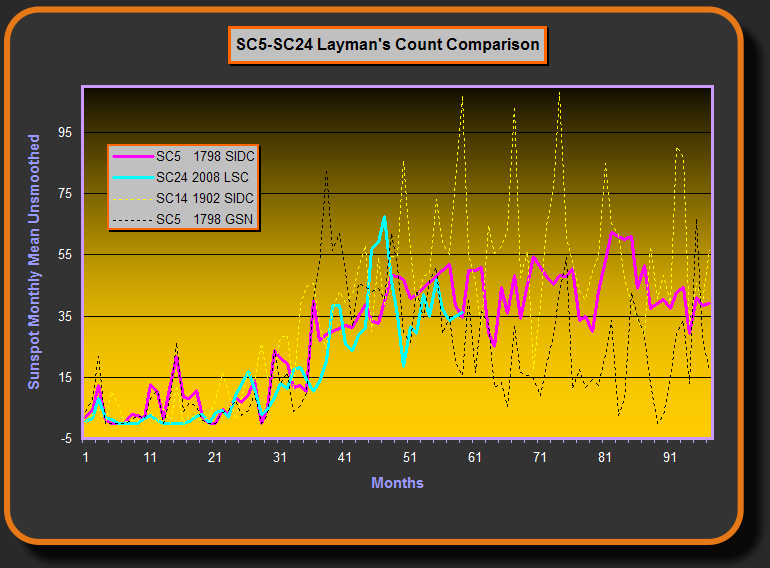Found this chart on an Accuweather blog page via a google search.

1911-1914 is a close match, but looking at these charts I would have to guess that the solar cycle in 1790 is similar to cycle 23 followed by the cycle in 1805 (solar cycle 5) that may be similar to cycle 24. A fairly strong cycle followed by an extended minimum and a peak that is around 50. So our current winter should be similar to 1802-1803 winters. That would be similar to the start of Dalton Minimum territory.

I think this guy also agrees. He goes into some detail analysis.

From his web page Laymen's Sunspot Count.
My predictions show that SC24 will be similar to SC5. The same Solar system forces are in play at similar timings and strength (SC24 perhaps showing a stronger disruption strength, which indicates that SC24 should be a smaller cycle than SC5). This graph using the SIDC monthly count from Jan 1798 will compare the Layman's Count from Jan 2008. The Layman's Count is the only count that can properly compare with the old SIDC (Wolf) measures. SC14 has been added for interest (starts Jan 1901) all 3 records beginning at the end of their previous cycle (where the downramp meets the bottom). The unsmoothed numbers showing the big swings in SC14.
You are probably referring to Solar Cycle 14 from the early 1900's. So 24 could be similar to either 5 or 14. Interesting. See the approximate 10 cycle intervals. Cycle 5 or Cycle 14 compared to Cycle 24.


